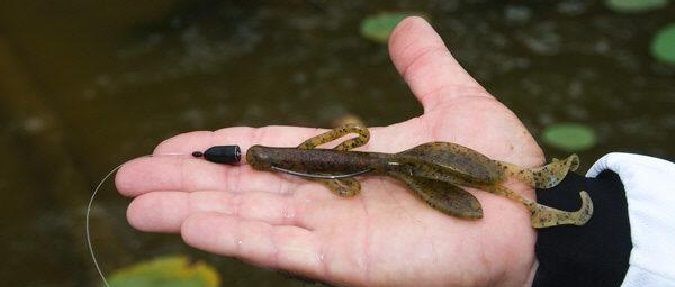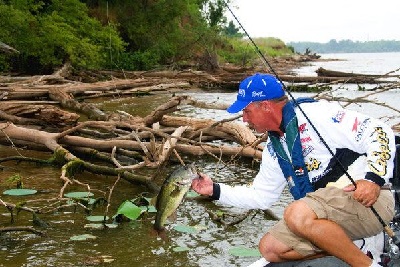 When Yamaha Pro Clark Wendlandt fishes shallow water cover, which is just about everywhere he fishes, the veteran tournament angler uses a two-lure approach that fools bass throughout the summer months. It’s a technique that has taken him to 13 Forrest Wood Cup® championships and three FLW® Angler of the Year titles during his career, so it works on lakes and rivers throughout the country.
When Yamaha Pro Clark Wendlandt fishes shallow water cover, which is just about everywhere he fishes, the veteran tournament angler uses a two-lure approach that fools bass throughout the summer months. It’s a technique that has taken him to 13 Forrest Wood Cup® championships and three FLW® Angler of the Year titles during his career, so it works on lakes and rivers throughout the country.
“I start fishing shoreline laydowns, stumps, or scattered lily pads and vegetation with a small, square bill crankbait,” explains Wendlandt, “and then follow by pitching or flipping a soft plastic creature bait into the same cover. The crankbait catches the most aggressive, and usually the largest, bass first, and the creature bait attracts others not as anxious to strike.
“It’s always effective to show bass different lures, especially when you know they’re receiving heavy fishing pressure, and these two lures are completely different in their actions and appearance.”
The square bill crankbaits, made by many different manufacturers, are effective because they seldom snag on limbs and brush. In contrast to “regular” crankbaits featuring a line-tie on the bill itself, square bills have the line-tie on the body. This feature, combined with the short, straight-edged bill itself, keep the lure from diving very deep or very fast. Wendlandt’s favorite depth to use them is between three and five feet.
“I fish them with 15-pound monofilament line, which is pretty stout line, and I reel them fairly fast,” continues the Yamaha pro. “The lures deflect off any object they hit, and this sudden change of direction seems to be what triggers the bass to bite. It’s almost exclusively a reaction strike. The best cover is fairly open, scattered brush, but I’ll use the crankbaits in lily pads, too. About the only cover you can’t fish them in is thicker, matted vegetation because they will get snagged.
“I don’t like to use them in clear water, either. If I can see the crankbait all the way back to the boat during my retrieve, the water’s too clear for me.”
The creature bait is Wendlandt’s follow-up lure, regardless of whether bass hit the crankbait. With a swimming-style tail and other appendages, these lures create more water movement and general commotion than ordinary plastic worms but they have a much different appearance in the cover than the crankbait. Wendlandt seldom casts them, but rather, uses a pitching or flipping approach.
“I Texas rig them with a slip sinker between 3/16 and 5/16-ounce so they don’t fall fast, and I usually try to get my line over a limb so I have more of a vertical presentation,” he points out. “That way, I can slowly jig the lure up and down and keep it in front of bass longer.”
The Yamaha Pro prefers 20-pound fluorocarbon line with the creature bait because of its sensitivity; when he’s using these lures he’s often already caught the most active fish in the cover and he’s expecting a slower bite.
“Flipping and pitching soft plastics to bass in shallow cover has always been one of my favorite ways to catch bass,” explains Wendlandt, “and it’s a technique I’ve been able to use successfully in tournaments for years, just like a lot of other anglers.
“The square bill crankbaits have been around for a number of years, too, but it has taken anglers longer to learn to use them properly and to their maximum efficiency. They really are amazing lures.
“I started combining the crankbaits with my soft plastics on the same cover because they give me two totally different presentations. This time of year, I always have rods rigged with both lures, and I’ll fish them all day long.”
